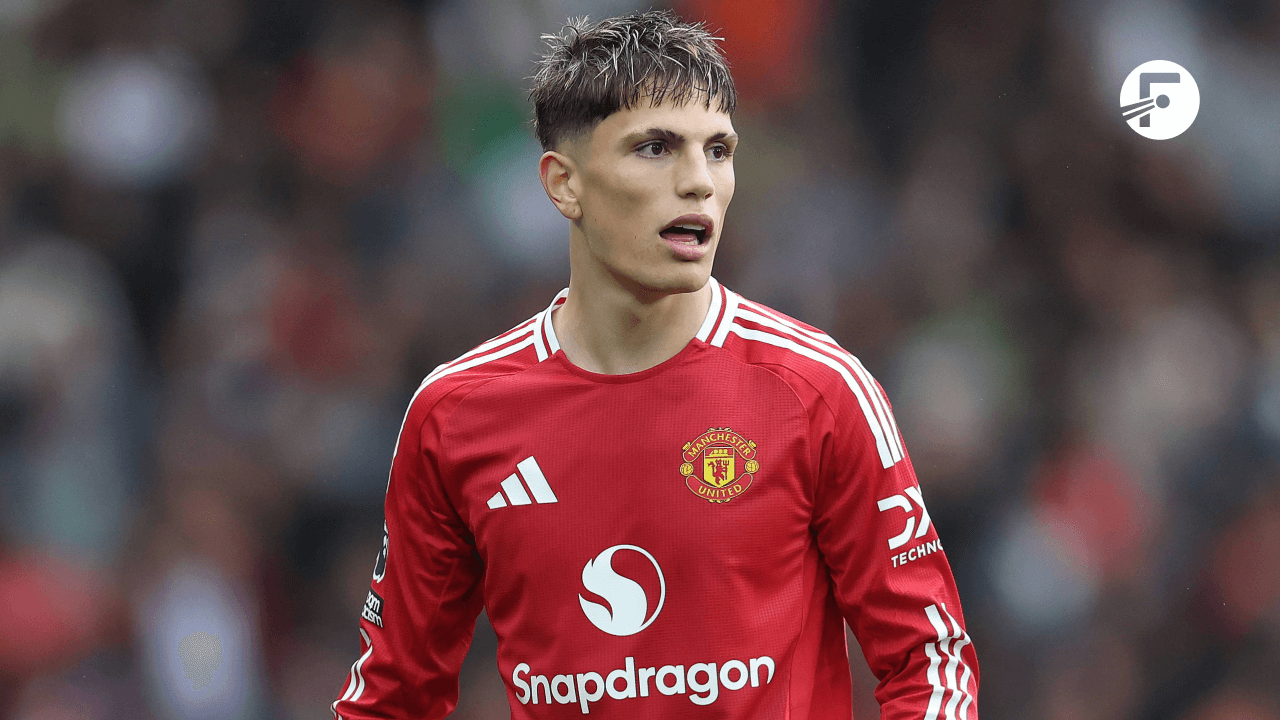For some time, the Premier League has been the most financially dominant league in European football. That used to mean clubs were more likely to buy prime age or even post-prime players, in the hopes of immediate impact, living with the consequences of them aging out of their peak and still having them on the wage bill.
In recent years, things have changed. Clubs are more aware of when players tend to be at their best, so more transfer funds have been directed towards future prospects. In addition, the modernisation of academies through the Elite Player Performance Plan has helped PL clubs produce tons of young talent over the years.
Those factors and others have led to where we’re at currently, with there being almost a glut of young players in the Premier League. Look up and down the table, and you can find so many high-end players aged 23 and under in the division. This piece will highlight some of them, with a slight twist. Five of them will be discussed, with each at a club that occupies a specific section in the table, in ascending order.
Mateus Fernandes – Southampton (20th)
The acquisition of Mateus Fernandes over the summer is an example of both the purchasing power that Premier League clubs have across the division, and how it’s being utilised. After a successful 2023-24 season on loan from parent club Portuguese club Sporting, there was hope for him being a regular contributor this campaign. Instead, newly promoted Southampton acquired him for a fee somewhere around £15m. At 20 years old, he also fits the transfer policy of recruiting young players who could help generate a sizable profit, even in the event they do find themselves relegated at the end of the season.
It’s not hard to see why Southampton signed Fernandes. He fits the mold of the all-action central midfielder who can provide two-way impact. His ground coverage is impressive despite not having an imposing physique, he’s able to win duels across the pitch whether in a high press or defending in a low block. His skill-set has been key in Russell Martin’s attempts at playing the type of controlled possession you associate with the big clubs. You’ll even see him try to sprinkle in forward movements, including late runs towards the box.
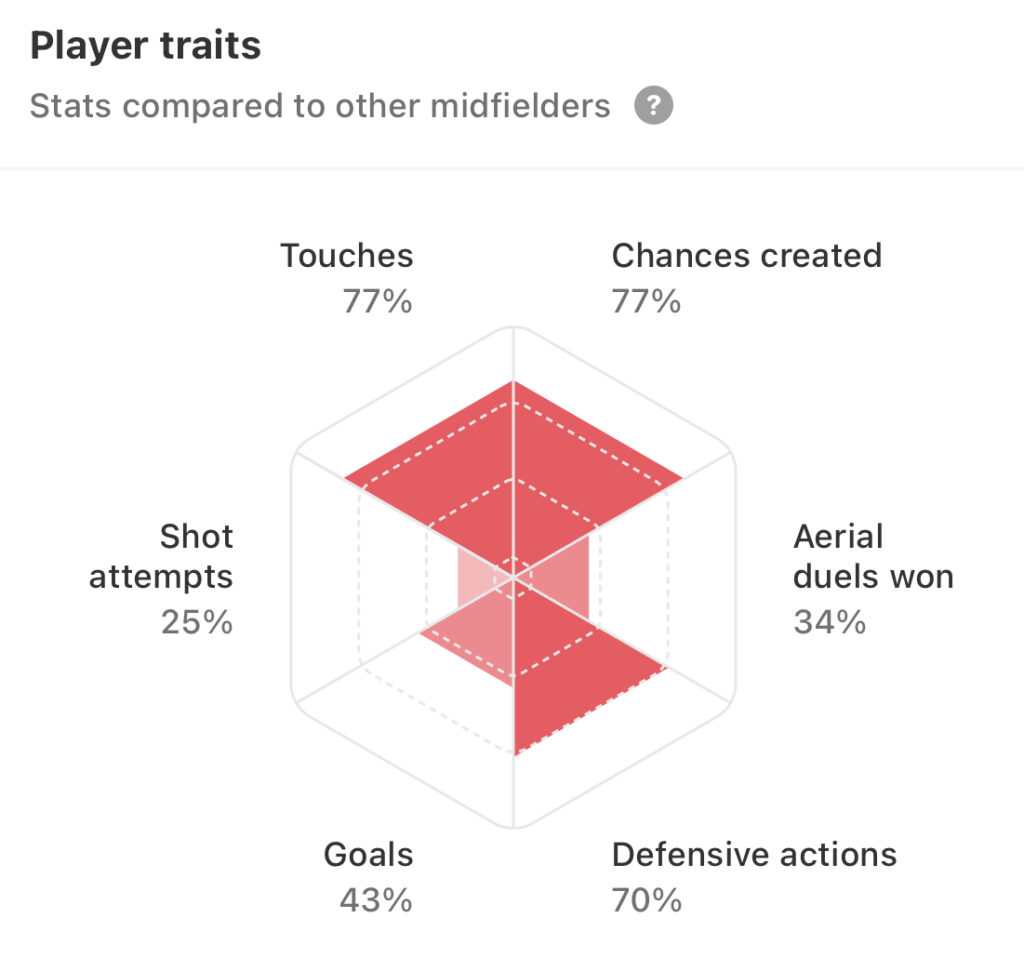
His recent showing against Everton was a showcase of what he can do at this stage of his career. He was constantly escaping into space on the ball and making multiple progressive carries into Everton’s final third, even trying to attempt quarterback-style passes into the box after evading his marker. The defensive work wasn’t flawless, in particular not effectively utilising his cover shadow, but the effort was there when trying to help regain possession.
If the performances continue at the level they’ve been at this season, it won’t be long before Mateus Fernandes becomes a household name.
Alejandro Garnacho – Manchester United (13th)
For all the issues that’ve been talked about with Manchester United recently, they’ve ended up with a strong young core of talent aged 23 and under, both those who’ve come through the academy and via dealings in the transfer market. The likes of Kobbie Mainoo, Leny Yoro, Rasmus Højlund, and others provide hope that with the right manager at the helm, the club could eventually get back to being a title contender in the not too distant future.
Included in that is Alejandro Garnacho, who’s been the most consistent source of shots in the United squad since he started getting regular minutes. This is also true when coming on as a substitute, where his athleticism and directness through off-ball movement can be immensely valuable against tired defenders. At his best, his unique combination of skills can act as a focal point for United’s attack, as evidenced by what he did against Brentford when he had a goal and eight shots. With Højlund dropping deep to attract Brentford’s centre-backs, it led to Garnacho attacking the space in behind or receiving switches of play to set up 1v1s with his marker.
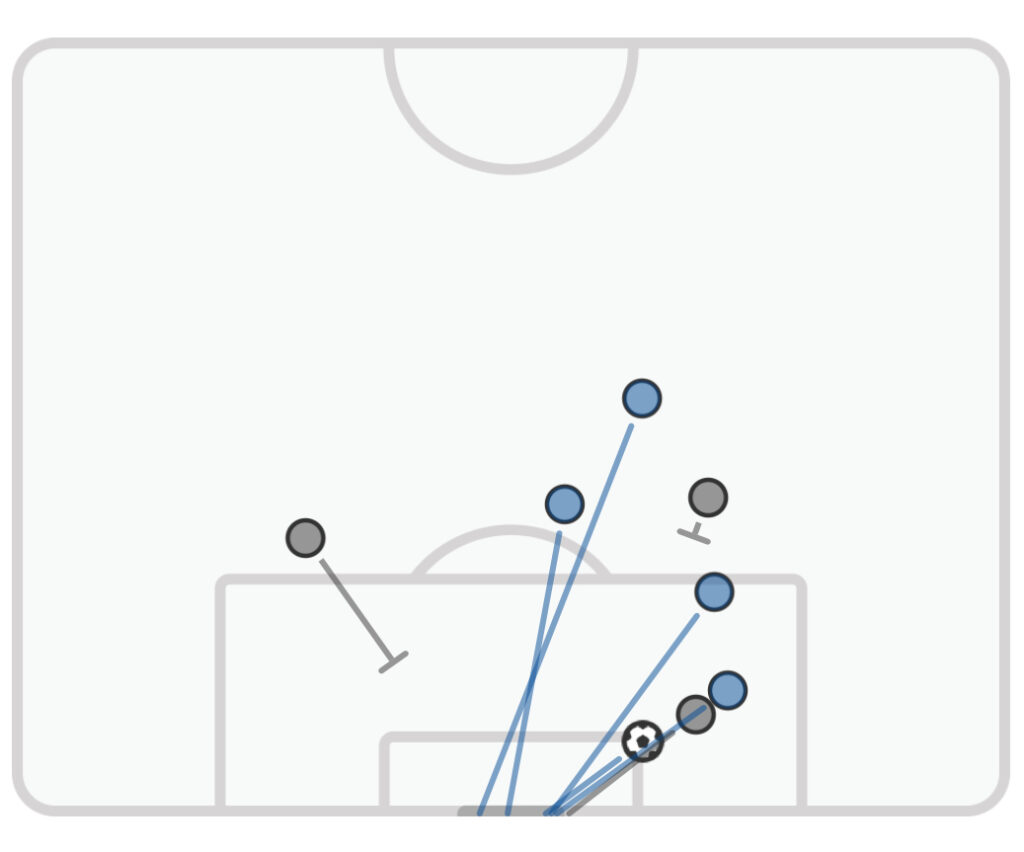
There’s been some discussion about who’ll occupy the wingback spots in new coach Rúben Amorim’s tactical setup, with Garnacho’s name being included. While there’s some sense behind the idea, in theory, it would be taking him further away from goal and making him less of a goal threat. While he’s not a flawless forward, in part due to his decision making in the final third, he gets himself into positions for shots in a manner that perhaps no one else on the squad can generate.
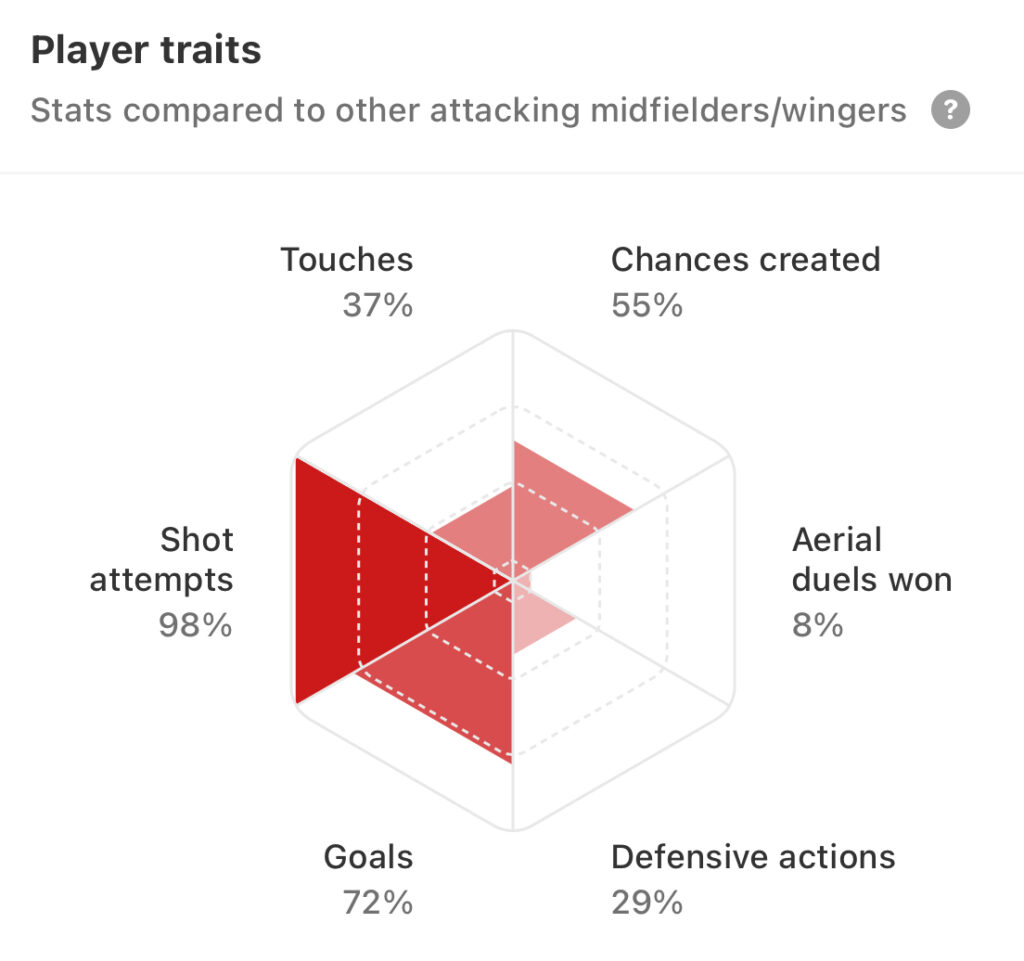
Warts and all, it’s becoming clear that Alejandro Garnacho will be a regular starter for Manchester United for years to come.
Jhon Durán – Aston Villa (9th)
In recent years, there’ve been an increasing number of young tall strikers who have the requisite athleticism needed to play in today’s game. Within that mold, there is variety in how these jumbo sized forwards operate. For example, Samu Omorodion and Joshua Zirkzee don’t operate in the same manner. In the case of Jhon Durán, he’s much closer to the former than the latter as today’s version of a traditional striker.
To put it simply, Durán has proven himself to be quite a handful for central defenders. He’s comfortable initiating contact and jostling to win aerial duels, which provides another method for Aston Villa to progress play. The sudden movements he has at attacking the channels makes him a threat to get in behind defensive lines. His height and frame also allow him to be a box threat for different types of shots.
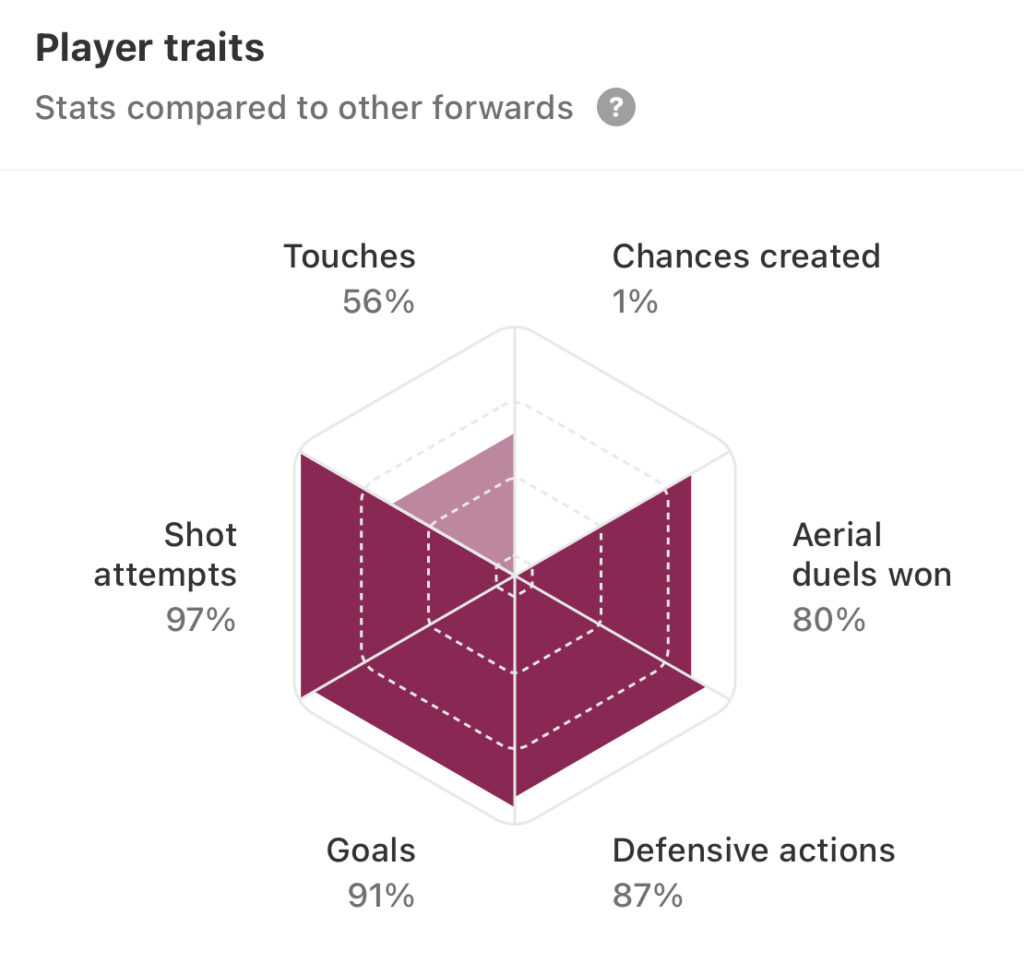
As of now, we do not have a robust sample size from him since Ollie Watkins is at the prime of his career and is the usual starter. He will likely not continue to score at the rate he has in the Premier League (four goals from 14 shots), but it might be possible that the way he takes his changes allows him to be an above average finisher going forward. With Villa’s busy schedule, there should be enough minutes to go around that we’ll get a better idea on just how high Durán’s ceiling really is.
Carlos Baleba – Brighton (6th)
Brighton are renowned for their ability to find gems in the transfer market, especially midfielders. The acquisition and sales of Moisés Caicedo and Alexis Mac Allister are examples of how the club helps develop players before they move onto the ‘Big 6’ within the Premier League (Chelsea and Liverpool respectively). At the rate Carlos Baleba has improved, he’s likely to be next in line for a big move and a big payday for the club.
Baleba is constantly involved in the early phases of buildup, receiving the ball from the centre-backs and sometimes even forming a back three in possession. While a capable passer, it’d be fair to say that he’s not an expansive one. What makes him an exciting prospect is that he’s able to carry past his marker time and time again, including on the turn. If he’s got the ball and has a bit of space ahead, he’ll pick up steam like a locomotive and cover a lot of ground.
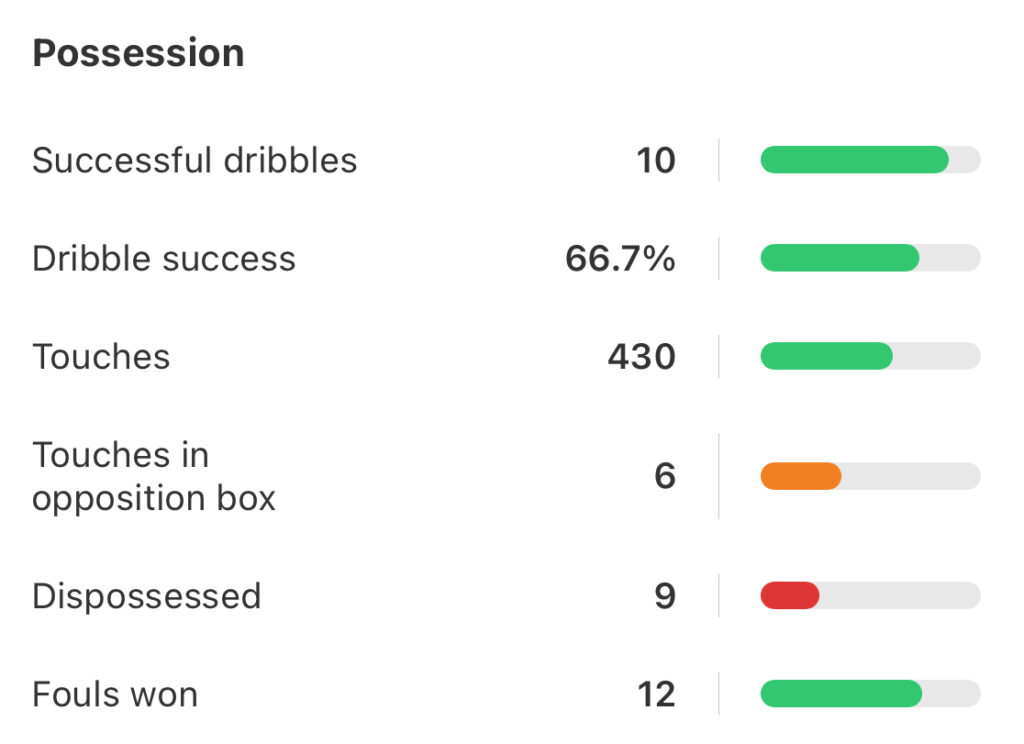
The out of possession work can be marvellous to watch. He has the type of burst and explosiveness needed to scale up towards elite level football, helping nullify transition opportunities. This can also lead to continually having consistent possession in the final third through counterpressing. He’s just above the 92nd percentile in possessions won in the final 3rd per 90 minutes.
Unsurprisingly, that combination of off-the-ball tenacity and burgeoning on-ball talent has led to feint whispers of the Premier League’s elite hoping to acquire him. That’s a story for another day, especially given that Brighton are once again trying to qualify for Europe, which means any transfer offer would likely have to start in the nine figure range. Midfielders of Baleba’s quality aren’t in abundance, and if he irons out his game, he could become a great midfielder during his peak.
Ryan Gravenberch – Liverpool (1st)
If there was one flaw which Liverpool had going into the season, most would have agreed it was the lack of a recognised No.6. They tried to rectify this with their attempts to sign Martín Zubimendi, but he decided to stay put with Real Sociedad. Arne Slot had to look internally for a potential answer, and so far, Ryan Gravenberch has answered the call in emphatic fashion.
Gravenberch’s ability to drive play with his ball carrying and short-range passing had in years past made him more of a threat in the middle and final third. However, under Slot, Gravenberch has played an important role in the early parts of Liverpool’s more methodical buildup play, trying to bait the opposition forward so the likes of Luis Díaz and Mohamed Salah can run into the vacated space. Part of that responsibility has been being proficient in resisting pressure, which he’s done expertly as he’s spun away from several opponents in deeper areas. This helps explain why he’s among the best at dribbling with the ball, with his dribble success rate at 73.3%.
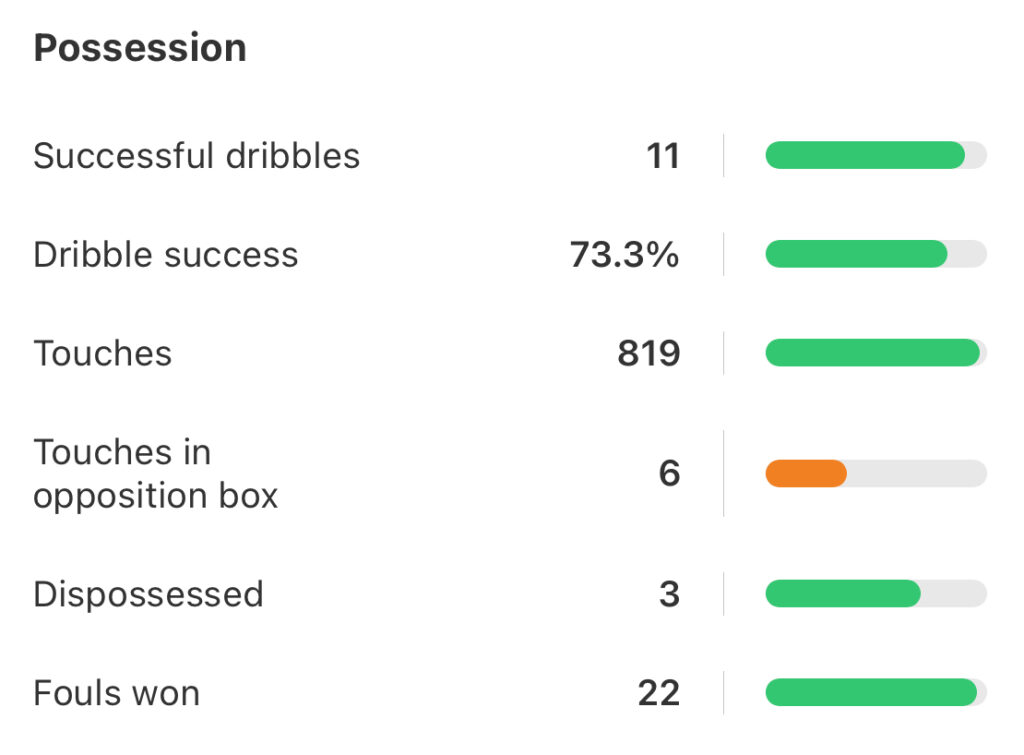
The space Gravenberch can cover defensively is also impressive, helped by his height at around 6’3”, which allows him to play out of possession that others don’t. In addition, he’s got good instincts for being able to read his opponent’s eyes and position himself to block passes or make interceptions. It’s not a coincidence that he’s currently just over the 84th percentile in interceptions.
Liverpool came into this season as likely the third best team in the league, residing in their own tier below Arsenal and Manchester City. Through 11 games, that’s not been the case as Liverpool hold a 5 point lead in the table and are currently the favourites for the Premier League title. A significant reason why has been the adaptability of Ryan Gravenberch.
(Cover image from IMAGO)
You can follow every match from the Premier League live with FotMob — featuring deep stats coverage, xG and player ratings. Download the free app here.
